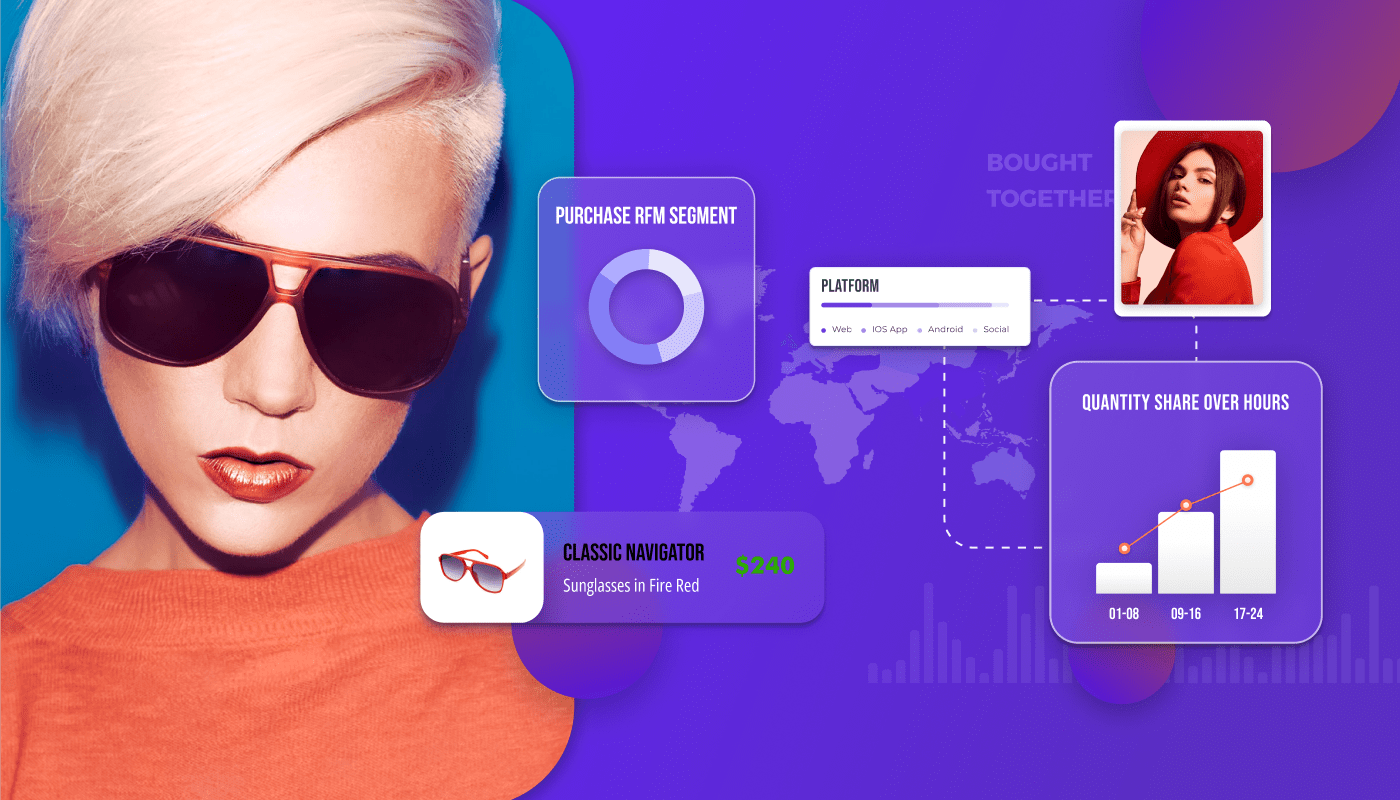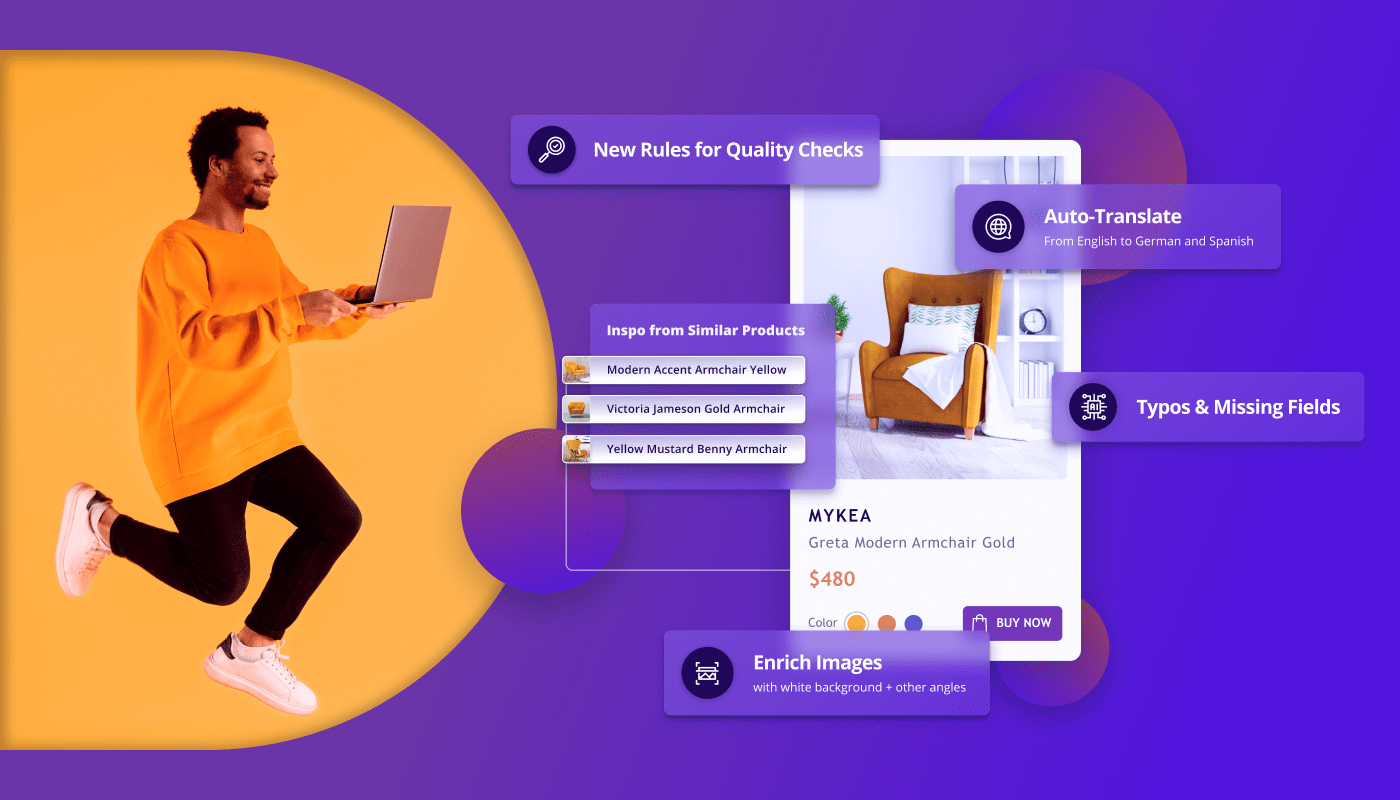From competition to shopper behavior, many factors influence ecommerce product performance. That is why topline metrics alone are never enough to understand why a product is doing better or worse than others.
In the ideal case, a balanced mix of KPIs uncovers existing issues and value drivers. Some provide a high-level strategic perspective and others reveal more tactical opportunities. Overall, they work together to provide a comprehensive picture.
Here are 6 key metrics you should be tracking to unlock the true potential of your product portfolio:
1. Conversion Funnel:
The sales conversion rate of a given product is a powerful indicator. But, it is as important to understand the drop-off rates at different stages of the funnel. From product impression to detail page view, add to cart, and checkout, there are 4 main stages to focus on.
At each stage, gaps can be identified by benchmarking a product’s funnel progression with similar products or category averages.
If total impressions of the product are low, it may indicate a problem with its visibility. If customers are viewing product details and not adding the product to the cart, there may be issues with the product information or visual assets.
Cart abandonment rate is another important metric to optimize in your funnel. It looks at the proportion of customers that add products to their cart but leave without completing the purchase. If a significant share of customers is leaving at this last step, it is critical to understand the reasons behind it. Unexpected costs for shipping, complicated processes, and security concerns are among typical culprits worth looking into.
Funnel metrics give you valuable information about the effectiveness of your product choices, marketing strategies, and website usability. They can also help you improve customer experiences to maximize engagement.
2. Traffic & Keywords:
The volume and engagement level of different traffic sources reveal what works for awareness. You can gauge the value of your client acquisition channels by measuring their traffic and comparing it over time.
It is important to understand which channels attract the most traffic and convert for a specific product.
If certain social channels stand out, it would be wise to boost your presence there. If specific websites generate a lot of referral traffic, their partnership model can be expanded with added perks. If one paid channel performs way better than others, that’s where you lean in with your marketing budget.
The keywords that attract visitors to a product are also insightful. They help you understand shopper intentions and searching habits. Once you have identified the top keywords for a product, you can also look at keywords of similar products to attract more relevant traffic. You can put these KPIs to use in optimizing your advertising budget and product content.
3. Price & Promotions:
According to a survey by First Insight, consumers rank price as the second most important factor when making a purchase, right after quality. But price also has a delicate relationship with quality — or, at least, the ‘perception’ of it. If a product is priced too low, it creates questions about quality and authenticity. If it is priced too high, then the competition may get away with most of the demand.
Price intelligence requires close monitoring of promotions and their impact on customer demand.
Price intelligence corresponds to tracking and analyzing pricing data. By monitoring checkout quantities and conversion rates associated with each price point, optimal ranges for a specific product can be determined. When applied to the whole product portfolio, this can have a significant impact on both sales and profitability.
Being aware of competitor pricing strategies is also important when adjusting pricing levels. You may implement a price matching policy, making sure your prices aren’t falling behind the competition. Major companies like Target, Walmart, and Best Buy all use price matching in some form. By analyzing the patterns behind their pricing changes, you can predict future moves and act accordingly.
4. Buyer Profiles:
All businesses have a baseline understanding of their customer base — some more granular than others. Since different products may resonate with completely different customers, analyzing buyer profiles at a product level is highly valuable.
Understanding who buys a specific product provides critical insights for effective positioning and base expansion.
If certain demographics or locations stand out as top buyers, they can be prioritized for further marketing activities. Increased engagement from higher-spend groups may require positioning the product as a ‘premium’ rather than a mass offering. If mostly new customers are interested in the product, it might be used as an acquisition tool to attract more customers.
An in-depth understanding of prominent buyer profiles and their characteristics is also critical for crafting customized experiences. With buyer profile breakdowns, you can tailor your product portfolio to your target market, your pricing strategy to the income and employment status of your customers, and your marketing communications to highlight qualities that will move the needle.
5. Buying Patterns:
Similar to customer profiles, buyer patterns also shed light on the positioning of a product. Some products are bought alone whereas others are typically add-ons in a basket. Some items are bought in bulk, and others are followed by repeat orders.
Knowing which of these categories a product falls into as well as other products bought or viewed with it, can easily inspire new promotions such as bundles and subscription offers.
Identifying when each product is mostly bought is also valuable information. In addition to guiding inventory planning, the seasonality of products can pinpoint slower months in time to plan your marketing campaigns. If a product has a higher share of interest at certain times of day or days of the week, this insight can be used to optimize the promotional calendar.
6. Real-time Trends:
Real-time insights allow spotting problems or seizing opportunities as they arise and not when it is too late. By tracking product performance in real-time, you can immediately take action to protect your brand or increase your sales.
Coupled with future predictions and forecasts, you can directly identify whether you are on or off target right away.
For example, a sudden increase in traffic may be related to bots that need to be looked into, a social media post that went viral, or a reference from a well-known organization. Depending on the source of the traffic, you might want to take prompt action, such as disabling a bot in the first malicious case, or promoting what worked well in the second case. Being continuously aware of your key metrics allows timely intervention in technical issues as well before they lead to serious implications.
Automation tools, such as rule engines, can also be recipients of real-time insights. You can design scenarios that trigger actions based on specific events, and let your technology take care of the rest. Such actions may include sending an automatic email to a customer who just abandoned their cart offering them 10% off, or canceling orders due to fraud detection.
Final Thoughts
Combine multi-dimensional insights. To effectively understand and improve product performance, painting a complete picture is necessary. From funnel progression to buyer profiles, make sure you include every data available to support business decisions.
Embed your product intelligence. According to Aberdeen Research, companies that implement embedded intelligence are 2.1 times more likely to achieve large-scale organizational adoption of its outputs compared to others. It is no surprise that bringing intelligence and analytics capabilities closer to their consumers increases adoption and generated value. This includes the applications they typically work on as well as the timeframe i.e. the more real-time the better.



